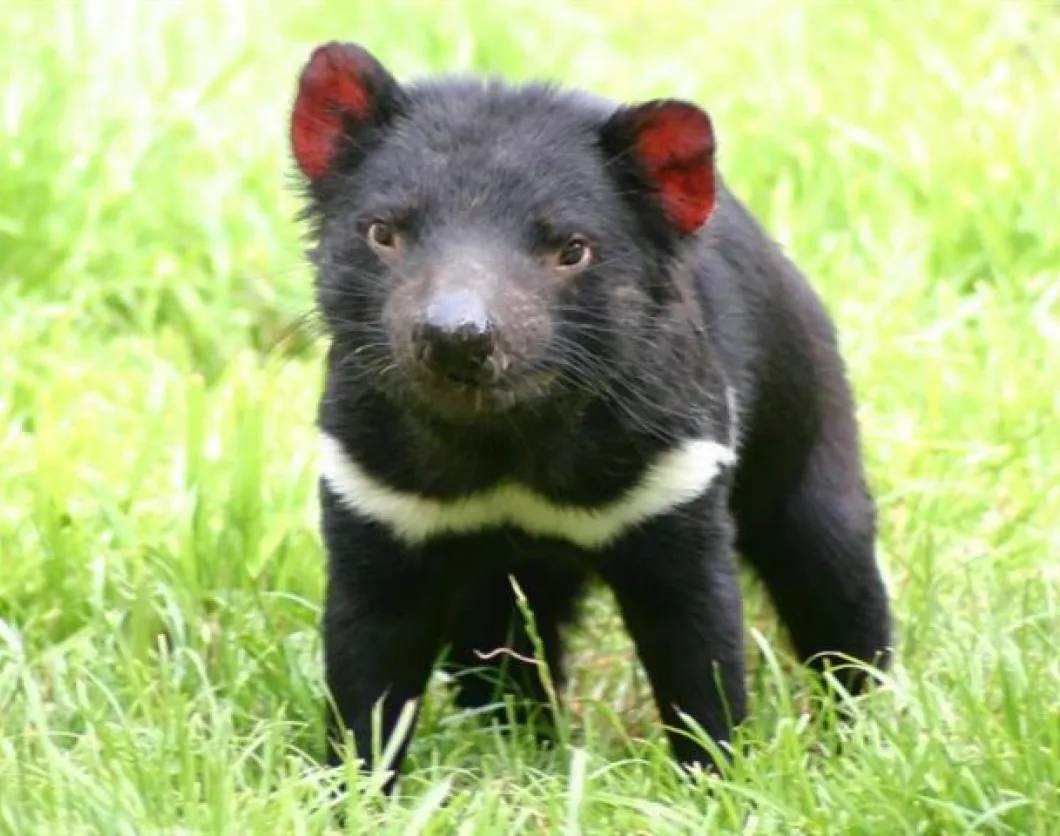On Tasmania's remote north-west coast, Geoff King runs a wildlife tour with a difference. King's devil restaurant offers a rare glimpse of Tasmanian devils feeding in the wild.
On an isolated stretch of coastline, just north of the Arthur River mouth, stands a modest hut. Sheltered from the fury of the Southern Ocean by hulking granite boulders, the fisherman's hut is local cattle farmer Geoff King's outlook on the mysterious world of the Tasmanian devil.
King, 51, has farmed around Marrawah all his life. Conscious of the damage his cattle were doing to the fragile coastal land, he removed his stock from the 320ha run in 1997 and established his wildlife tours in 1999.
As darkness descends on the hut, King ushers his guests inside. In a mound of native grasses outside the hut's only window King has hidden a sound monitor. The microphone sits on the mantle above the fireplace. Suddenly there's a rustling noise and deep snarls. "Shhh!" says King as he raises his finger to his mouth.
{%C3,4%}
Gently, he draws open the curtains to reveal a road-killed wallaby carcass staked to the ground. The scene is lit by a spotlight outside the hut. A Tasmanian devil creeps up to the carcass. "She's in excellent condition," remarks King, admiring her raven black, shiny coat.
Devils live a mostly solitary life after being weened from their mothers at about nine months of age. Just as she settles in for a snack, a curious shape emerges from the shadows – another devil moves up for a feed.
Five devils come to dine this night. As we bounce back across the undulating heathlands at the end of the evening, King shines a spotlight into the heart of the darkness: swarms of Bennetts wallabies and pademelons scamper in all directions. This is wild Tasmania at its best.
Factfile
King’s run wildlife tours operate from Marrawah in Tasmania’s northwest. In order to prevent devils becoming dependent on King’s feeding the tour operates no more than five days a fortnight and no more than three days in a row.
Tasmanian Devil (Sarcophilus harrisii)
The Tasmanian devil, although only the size of a small dog, can look and sound incredibly fierce. Powerful jaws (nine times as strong as a dog's and comparable to a shark or crocodile) and teeth enable it to completely devour its prey - bones, fur and all. The only thing devils won't eat are echidna quills. Devils once lived in mainland Australia but today are found only in Tasmania. Devils can be seen at the Narawntapu National Park, Mount William National Park, Cradle Mountain - Lake St Clair National Park, the Arthur River and highland lakes area.
Viewing season: young emerge in September, October and November.
Photos: TR, Flickr









